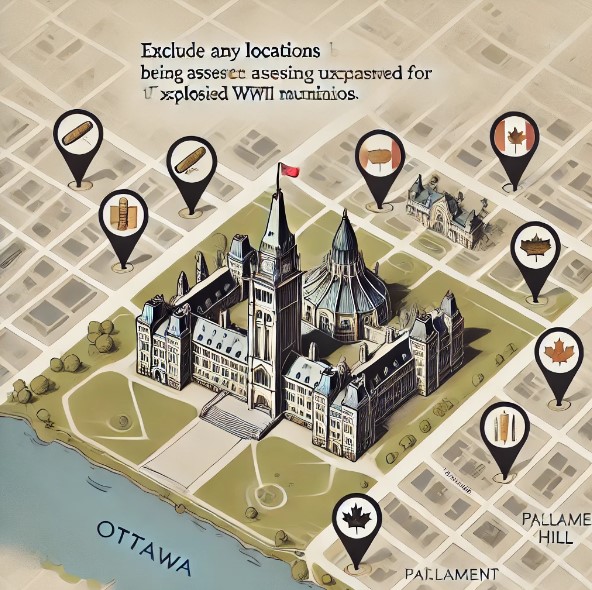
In an unexpected blend of history and modern safety, Ottawa residents may be surprised to learn that remnants of the Second World War still linger beneath their feet. The Canadian government, alongside military experts, is currently assessing seven sites across Ottawa for unexploded munitions left over from WWII. This initiative aims to ensure public safety by locating and addressing any hidden ordnance that might still pose risks. Here’s what you need to know about these efforts and how they impact our community.
Uncovering Ottawa’s Wartime Past
While WWII battlefields were primarily overseas, Ottawa played a significant role on the home front. During the war, the city was a hub for training exercises and munitions storage, with several areas used for practicing military maneuvers. After the war, most of the equipment was cleared, but as history has shown, some unexploded ordnance (UXO) can remain buried and undetected for decades.
Fast-forward to today, and these sites are being evaluated as part of an ongoing initiative to ensure that Ottawa’s land remains safe for public use and future development. With advanced technology and meticulous planning, specialists are now re-examining these historic sites.
The Seven Sites Under Review
Each of these seven sites holds a unique place in Ottawa’s history. From greenbelt forests to open fields, the areas under review may have seen live-fire exercises, munitions storage, or field maneuvers during WWII. Here’s a look at each one:
- Greenbelt Forest – Once a critical training ground, this popular hiking area is now under careful inspection to ensure safe recreation.
- Rockcliffe Park – This site near the Ottawa River was used extensively during the war, and while it’s a peaceful residential area today, experts are reviewing it to detect any lingering UXO.
- Mooney’s Bay – A family-friendly area that may have historical training ties, Mooney’s Bay is now under assessment to protect both the public and natural habitat.
- Lebreton Flats – Known today for its development projects, Lebreton Flats has a complex history, including its use as a WWII site.
- Central Experimental Farm – While famous for agricultural research, portions of this site may have supported military activities during the war and are now being checked.
- South March Highlands – A natural area beloved by bikers and hikers, this forested space is also under review for any wartime remnants.
- Westboro Beach Area – Close to the Ottawa River, this area saw wartime use and is now being assessed for potential UXO.
How Are the Assessments Conducted?
Modern technology allows these assessments to be thorough yet minimally invasive. UXO specialists use tools such as ground-penetrating radar and magnetometers to detect metal objects below the surface. These non-intrusive methods enable teams to locate and identify potential UXO without disturbing the soil.
When a potential UXO is detected, a specialized response team conducts further analysis. If ordnance is found, controlled removal techniques are employed to safely clear the site. Throughout the process, officials keep the public informed and manage access restrictions to ensure everyone’s safety.
Why This Matters to Ottawa Residents
Unexploded WWII munitions, while rare, can pose significant risks if accidentally triggered. Public safety is the primary goal, but these assessments also offer a chance to connect with Ottawa’s history. By addressing these remnants responsibly, Ottawa honors its past while safeguarding its future.
For residents near these sites, safety measures are in place. Temporary restrictions on access may occur, but officials will keep the public informed every step of the way. The government’s commitment to thorough assessments means that Ottawa’s green spaces, parks, and future developments will remain safe for generations to come.
Staying Informed
Ottawa residents are encouraged to stay up-to-date with these assessments. Community meetings and official briefings will be held to provide information on findings, necessary precautions, and any planned removals. Those interested in learning more or who have questions about specific sites can contact local authorities or visit the city’s official website.
Wrapping Up
This assessment effort is more than just a safety measure; it’s a window into Ottawa’s role during WWII and the lasting impact of those turbulent times. As these sites are carefully examined, we’re reminded of how the past intertwines with our present landscape.
Through these efforts, Ottawa continues to honor its history while preparing for a safe, thriving future. If you’re near one of these historic areas, stay informed, respect any temporary restrictions, and remember that Ottawa’s past holds stories—and sometimes hidden remnants—worth exploring.
